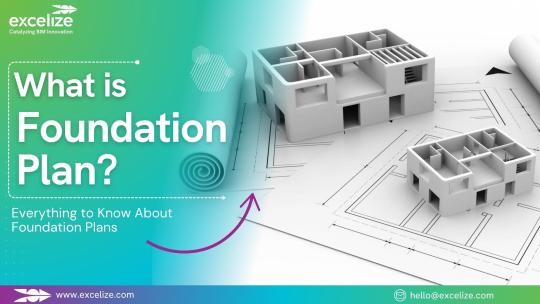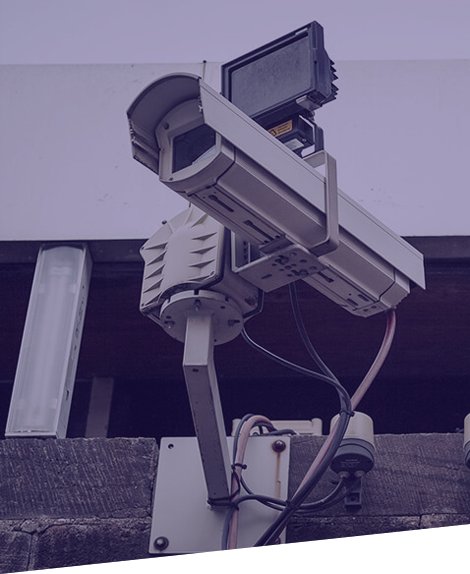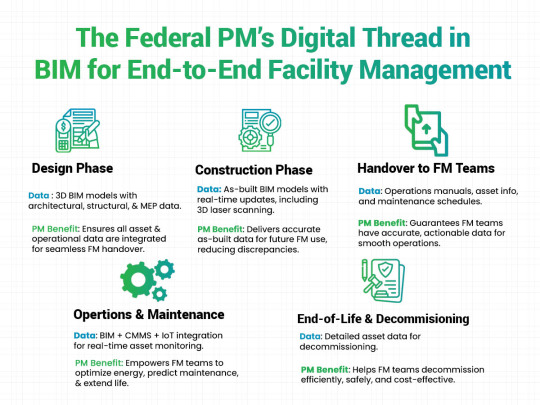#Building Information Modeling
Explore tagged Tumblr posts
Text

Building Information modeling (BIM) is an clever software program modeling procedure that engineers, contractors, and designers can use to collaborate on a building’s layout, construction, and operation. It’s extra than just a version. It’s a method of gathering and handling facts at some stage in a building’s whole existence cycle.
BIM encompasses not simplest geometry and spatial relationships, however it also files constructing features, together with unique statistics about the sort of materials used, the quantity used, and the way the ones characteristics effect the building as a whole. BIM may be thought of as a database of facts ranging from task substances and cost – to the 3D version after construction – to operation of the facility. This records may be used to actively control a task each step of the way.
2 notes
·
View notes
Text

BIM Careers: Building Your Future in the Digital AEC Arena
The construction industry is undergoing a digital revolution, and BIM (Building Information Modeling) is at the forefront. It's no longer just a fancy 3D modeling tool; BIM is a collaborative platform that integrates data-rich models with workflows across the entire building lifecycle. This translates to exciting career opportunities for those who can harness the power of BIM.
Are you ready to step into the octagon of the digital construction arena? (Yes, we're keeping the fighting metaphor alive!) Here's a breakdown of the in-demand skills, salary ranges, and future prospects for BIM professionals:
The In-Demand Skillset: Your BIM Arsenal
Think of your BIM skills as your tools in the digital construction toolbox. Here are the top weapons you'll need:
BIM Software Proficiency: Mastering software like Revit, ArchiCAD, or Navisworks is crucial. Understanding their functionalities allows you to create, manipulate, and analyze BIM models.
Building Science Fundamentals: A solid grasp of architectural, structural, and MEP (mechanical, electrical, and plumbing) principles is essential for creating BIM models that reflect real-world construction realities.
Collaboration & Communication: BIM thrives on teamwork. The ability to collaborate effectively with architects, engineers, and other stakeholders is paramount.
Data Management & Analysis: BIM models are data-rich. Being adept at data extraction, analysis, and interpretation unlocks the true potential of BIM for informed decision-making.
Problem-Solving & Critical Thinking: BIM projects are complex. The ability to identify and solve problems creatively, while thinking critically about the design and construction process, is invaluable.
Salary Showdown: The BIM Payday Punch
Now, let's talk about the real knock-out factor – salaries! According to Indeed, BIM professionals in the US can expect an average annual salary of around $85,000. This number can vary depending on experience, location, and specific BIM expertise. Entry-level BIM roles might start around $60,000, while BIM Managers and BIM Specialists with extensive experience can command salaries exceeding $100,000.
Future Forecast: A Bright BIM Horizon
The future of BIM is bright. The global BIM market is projected to reach a staggering $8.8 billion by 2025 (Grand View Research). This translates to a continuous rise in demand for skilled BIM professionals. Here are some exciting trends shaping the future of BIM careers:
BIM for Specialty Trades: BIM is no longer just for architects and engineers. We'll see increased adoption by specialty trades like HVAC technicians and fire protection specialists.
Integration with AI and Machine Learning: Imagine BIM models that can predict potential issues or suggest optimal design solutions. AI and machine learning will revolutionize BIM capabilities.
VR and AR for Enhanced Collaboration: Virtual Reality (VR) and Augmented Reality (AR) will allow for immersive BIM model walkthroughs, facilitating better collaboration and design communication.
Ready to Join the BIM Revolution?
The BIM landscape offers a dynamic and rewarding career path for those with the right skills. If you're passionate about technology, construction, and shaping the future of the built environment, then BIM might be your perfect career match. So, hone your skills, embrace the digital revolution, and step into the exciting world of BIM with Capstone Engineering!
#tumblr blogs#bim#careers#buildings#bim consulting services#bim consultants#construction#aec#architecture#3d modeling#bim coordination#consulting#3d model#bimclashdetectionservices#engineering#MEP engineers#building information modeling#oil and gas#manufacturing#virtual reality#collaboration#bim services#uaejobs
2 notes
·
View notes
Text
BIM Services & BIM Coordination in New York
Looking for BIM Services in New York? We're your trusted BIM service providers, offering efficient and effective BIM solutions, including SCAN to BIM.
2 notes
·
View notes
Text
2 notes
·
View notes
Video
youtube
How dynamo model warehouse in 30 minutes? | Modeling warehouse with dynamo
#youtube#dynamo#revitdynamo#bimrevit#structure#revit#steelstructure#bim#autodesk revit#building information modeling#bim automation#warehouse
2 notes
·
View notes
Text
What is the Foundation Plan? Everything to Know About Foundation Plans

Foundation Plan Drawings are the most important part of any construction project, as they bear the entire load of the house and transfer it to the underlying soil. Proper foundation plans reduce the risk of mistakes made by the construction team and comply with standard building codes.
These plans provide important information, including load-bearing specifications, dimensions, and material requirements. A proper foundation plan can make your building earthquake resistant, flood resistant, and withstand other natural calamities.
In this article, we will cover everything you need to know about foundation plans.
What is the Foundation Plan?
The Foundation Plan is the architectural design that provides information about the layout and design of the foundation. It also includes size, shape, and Materials needed. These drawings make sure the weight of the building is spread equally over the foundation. Structural Engineers or Architects create a Foundation Plan, and it acts as a guide for builders and contractors during the construction.
Components of the Foundation Plan Drawings
Foundation Layout: Foundation Layout demonstrates the complete outline of the building’s foundation, such as walls and columns, as well as the load-bearing elements that support the load of the building.
Footings: Footings are the structural elements that support the building by equally distributing the building’s weight over the soil. This plan shows the types of Footings to use, such as spread footing and slab footing. It also provides information about the footing’s size, shape, and location.
Read more...
#bim consulting services#building information modeling services#bim services#3d bim modeling services#building information modeling#bim consulting firm#bimcoordination#bim service providers#mep bim services#construction
0 notes
Text
Understanding Common Subsurface Utilities: Essential Infrastructure Below Ground
Subsurface utilities are the invisible framework supporting modern cities and industrial areas. These underground systems encompass a wide range of essential services, from water supply lines and sewer systems to gas pipelines and electrical power cables. Telecommunication lines facilitate broadband and communication services, while irrigation systems support landscaping and green spaces. Oil and fuel pipelines are critical for energy distribution and require precise documentation due to environmental concerns. Traffic signals and street lighting cables contribute to municipal safety and urban functionality. Additionally, underground storage tanks (USTs), often found at older sites, may contain hazardous materials, necessitating careful handling. District heating and cooling lines offer energy-efficient solutions for large-scale temperature regulation in urban and institutional zones. Proper identification, mapping, and management of these utilities are vital for safe excavation, infrastructure planning, and sustainable development.
Learn more
0 notes
Text

What are Revit Families in the context of Building Information Modeling (BIM)?
Revit families are the fundamental components used to build intelligent, data-rich models in Building Information Modeling (BIM) workflows. These families represent real-world building elements such as doors, windows, furniture, lighting, structural components, and mechanical equipment. Each family contains both 2D and 3D geometry along with parametric data that defines its behavior and characteristics within a project. Whether it's a standard object like a wall or a custom-designed piece of equipment, Revit families enable designers to create consistent and accurate models. By incorporating the right types of Revit family—including system families, loadable families, and in-place families—AEC professionals can improve coordination, automate schedules, and ensure greater precision across design and construction phases. In short, Revit families play a vital role in enhancing efficiency, accuracy, and collaboration throughout the BIM process.
#Revit Families#Types of Revit Family#Building Information Modeling#Revit Family Creation#Revit MEP Families
0 notes
Text

UTwin è all'avanguardia come fornitore di tecnologie per la modellazione Building Infromation Modeling (BIM) degli edifici, con l'obiettivo di assistere i proprietari immobiliari in una gestione dei dati più intelligente e collaborativa. Le nostre soluzioni si rivolgono a una clientela globale, con una forte presenza in Italia, Europa e nell'area MENA.
0 notes
Text
3D Building Scanning for Accurate As-Built Plans in the USA

The Architecture, Engineering, and Construction (AEC) industry in the United States is entering a new era of precision and efficiency. One technology leading this shift is 3D building scanning, a digital solution revolutionizing how professionals plan, design, and manage building projects.
What Is 3D Building Scanning?
3D building scanning uses advanced LiDAR or photogrammetry to capture precise spatial data of an entire structure. It generates a detailed point cloud, which is then converted into as-built drawings, 2D floor plans, or BIM models using software like Autodesk Revit, AutoCAD, and Navisworks.
This technology provides highly accurate, real-world geometry that supports smarter decisions throughout the project lifecycle—from preconstruction to facility management.
Why AEC Firms in the USA Are Adopting 3D Building Scanning
✅ 1. Generate Accurate As-Built Documentation
Outdated blueprints and site conditions are a common challenge, especially in renovations. 3D scanning enables contractors and architects to work with true-to-site digital data—reducing design errors and costly rework.
✅ 2. Accelerate Commercial Renovation Planning
Whether it's a retail remodel in Los Angeles or a warehouse retrofit in Dallas, scanning provides a complete building survey in hours instead of days. This fast, non-invasive method is ideal for occupied spaces or tight project schedules.
✅ 3. Seamless Integration with BIM Workflows
Point cloud data integrates directly into Revit for scan-to-BIM modeling, improving MEP coordination, structural planning, and clash detection—key for high-rise builds, healthcare facilities, and industrial environments.
✅ 4. Enhance Facility Management & Long-Term Operations
3D building scans produce digital twins that support asset management, space planning, and system upgrades for schools, hospitals, government buildings, and more.
Where 3D Scanning Adds Value
Commercial Real Estate Development Perfect for feasibility studies, tenant fit-outs, and property marketing.
Historical Building Documentation Protect and preserve architectural details with laser-precise digital archives.
Healthcare, Education, and Public Sector Projects Ensure safety and compliance with minimal disruption to ongoing operations.
Federal and Government Infrastructure Meet BIM mandates and improve accountability with accurate project data.
Technologies Behind 3D Building Scanning
The USA’s top scanning providers use tools like:
Leica BLK360 and RTC360
FARO Focus Premium
Trimble X7
Drone-based LiDAR and photogrammetry
SLAM-based handheld scanners
Each device is chosen based on site complexity, interior/exterior scope, and level of detail required.
Choosing a 3D Scanning Partner in the USA
Here’s what to look for when selecting a scanning provider:
Proven experience in AEC-specific workflows
Capability to deliver BIM-ready Revit models
File format support (E57, RCP, DWG, IFC)
Fast turnaround for time-sensitive projects
Fully trained field teams with safety certifications
Final Thoughts
Whether you're managing a multi-phase retrofit or preparing for a LEED-certified construction project, 3D building scanning provides the accuracy, speed, and digital insight today’s AEC teams demand.
From as-built surveys for architects to clash detection models for contractors, scanning empowers your project team to build smarter and avoid surprises.
📞 Need Help with 3D Building Scanning for As-Built Documentation or Scan to BIM Modeling? Talk to experienced professionals who understand the real-world challenges of construction, renovation, and facility management. Get a free quote or schedule a pilot project for 3D laser scanning services in the USA, including point cloud to Revit conversion, as-built floor plans, and scan-to-BIM for commercial buildings.
#3d laser scanning#laser scanning#architecture#building design#building information modeling#gis#3d scanning#urban architecture#as built documentation#scant o bim#clash detection#construction
0 notes
Text
Best BIM Tools in 2025 and Selecting the Right BIM Software

BIM is a comprehensive approach in the AEC realm, and its applications and tools hold a significant position. It is vital to choose the right BIM software for project requirements, coordination, and efficiency. Here’s a detailed, curated list of the best BIM software and key factors for selecting it.
#bim modeling services#3d bim services#mep shop drawings#building information modeling#interior visualization#clash detection#revit families creation#3d cad drawings#shop drawing services#bim company#top bim software#best bim tools
2 notes
·
View notes
Text
PARKING BARRIER INSTALLATION
After installing the latest Dahua CCTV Dubai systems, there is no need to worry. Modern CCTV systems are also installed in the commercial parking lots and high traffic zones so that detailed monitoring of the vehicles becomes easy. It is good to install the CCTV systems after analyzing the requirements.Whether you are searching for Dahua CCTV or UNV CCTV Dubai systems, please learn everything about their features.

0 notes
Text
BIM Software Solutions for Modern HVAC Applications
As the HVAC industry continues to evolve in 2025, Building Information Modeling (BIM) has become an indispensable tool for professionals seeking to optimize design, installation, and maintenance processes. For HVAC engineers, contractors, and technicians, selecting the right BIM software can significantly impact project efficiency and outcomes. Let’s explore the most effective BIM solutions for…
#3D modeling#augmented reality#Autodesk Revit#automation#Bentley AECOsim#BIM#BIM workflows#building information modeling#Building performance#building systems#clash detection#cloud collaboration#cooling loads#decision matrix#digital twin#duct design#energy analysis#Energy efficiency#fabrication documentation#Graphisoft ArchiCAD#heating loads#hvac#HVAC design software#HVAC engineering#interoperability#mechanical engineering#mechanical systems#MEP#MEP coordination#mixed reality
0 notes
Text
Scan To Mesh Step By Steps
The Scan to Mesh process in BIM technology captures a physical space or object using 3D scanning tools like LiDAR or laser scanners. The raw point cloud data is cleaned and processed to eliminate noise and fill in missing areas. This data is then converted into a 3D mesh by connecting the points to form a detailed surface model. The mesh is refined for accuracy and smoothness before being integrated into BIM software for further design, analysis, and visualization. The result is a high-fidelity digital representation of the scanned environment.

#scan to bim#bim technology#bim services#scan to mesh services#scan to mesh#3d scanning#building information modeling
0 notes
Text
What is Revit? A Complete Guide to BIM Software by Autodesk

Revit is a Building Information Modeling software by the renowned software company Autodesk. It has completely transformed the architecture, engineering, and construction (AEC) industry. Revit is a multifunctional software that embeds important project data, such as materials, schedules, costs, and dimensions, directly into the model.
Revit allows multiple team members to work on a project simultaneously, so they can design, visualize, simulate, and collaborate in real time. It is mostly used by architects, structural engineers, MEP engineers, contractors, and other construction professionals.
There are many tools and software available for design, building, and modelling, but Revit is ahead of the rest and continues to dominate the market.
What is Revit software used for?
Autodesk Revit is the best tool for Building Information Modeling. It helps to create the complete 3D model of the structure from floor plans, elevations, sections, etc. In Revit, multiple team members can work on a project, which makes for better communication among all the team members and improves efficiency in the design and construction process.
Whether it’s a simple home or complex projects, Revit supports you at every stage of the building life cycle. Revit is not just a design tool or software, it’s a platform where all team members work together to deliver quality outcomes faster and efficiently. Revit allows cost estimators and project managers to calculate the project cost.
Read more...
#building information modeling services#3d bim modeling services#bim consulting services#bim services#building information modeling#construction#bim consulting firm#mep bim services#bimcoordination#bim service providers
0 notes
Text
Federal Facility Management Reimagined: BIM as the Backbone of the Digital Thread
From blueprint to demolition, BIM supports every phase of the federal facility lifecycle. Design Phase BIM captures the intent of every system, architectural, MEP, and structural into a unified model. In Construction, that model evolves with field-verified updates for unmatched as-built accuracy. By the time of Handover, facility managers are equipped with digital twins, maintenance logs, and equipment data to start operations on solid ground.
With BIM informing CMMS tools and real-time sensor networks, Operations & Maintenance becomes smarter and more efficient. At End-of-Life, BIM provides clarity on material quantities, hazardous systems, and decommissioning logistics.

0 notes